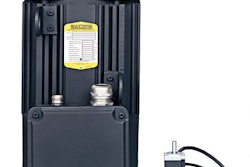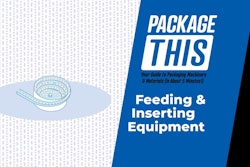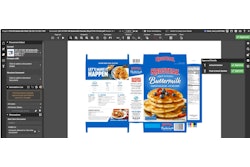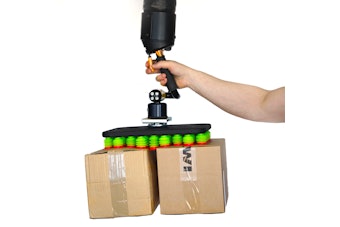Packaging price increases continue to be of unprecedented magnitude (double-digit percentages) and frequency (more than once a year), often taking effect upon announcement. Worse still, they’re playing out within a weak economy. The challenge is particularly acute in the consumer packaged goods industries, due to their reliance on packaging as a component of competitive strategy.
Don’t accept increases on faith. There’s no denying the factors that are applying upward pressures on packaging prices: rising costs for-raw materials, energy, fuel, and transportation. After all, every CPG company is experiencing increases in these same categories. Even so, it pays to delve into every increase, in search of mutually beneficial opportunities. For example, although a supplier may announce a national price increase, a CPG company should review the increase for a regional, if not local, perspective. The CPG company that is located closer to a supplier has a logical argument that the transportation portion of the increase reflect that fact.
Suppliers go to varying lengths to refer to their own costs when announcing a price increase, wanting to portray it as necessary, delayed, and minimal. But, CPG companies that fair best regard price increases as subject to negotiation.
Revisit the importance of price. What role did price play in the initial choice of the supplier? Should that role be revised? A supplier that was chosen on the basis of having been the low-bidder might remain so after a round of industry price hikes, but not necessarily. Suppliers within a sector don’t all increase prices by the same amount and frequency. So stay aware of the position of a supplier as to price-competitiveness. But, competitiveness should be defined in practical terms that reflect the conditions of the company, because discontinuities from frequent supplier changes can outweigh the benefits of price.
Other components of the supplier contract can be modified to reduce the size and impact of a price increase. The length of the contract and the quantities ordered might induce the suppler to offer a better price. There is, however, a balance to be struck somewhere between having a sole suppler (with its risks of disruptions) and too many suppliers (with its risks of diseconomies).
Services are another area of possibilities. Is the supplier itemizing nonessential services, of if they are essential, can it be argued that they should not be charged separately, because they are part of the product? Inspections performed by the supplier are an example. Or, are there tasks performed by the CPG company that the suppler can perform at a savings? Keeping with the example of inspections, the supplier might certify each shipment, relieving the CPG company of incoming inspection.
Decide on the supplier’s overall competitiveness. The CPG company should make an evaluation of the supplier’s position relative to future price increases. A supplier with plans for productivity gains through investments in technology, equipment, and personnel will be better positioned to offer better prices.
Another measure is the sense of partnership that’s been demonstrated by the supplier throughout the relationship. It’s a reliable indicator of how willing the supplier will be to work with customers in containing the effects of price increases. Generalizations that correlate the sense of partnership with the supplier’s size should be avoided. A large supplier with experience and staff can be a big asset, as can be a smaller supplier with a devoted personal approach.
Can the supply chain be restructured? Steep and frequent price increases are magnified by the length of the supply chain: The longer the chain, the greater the effect, since each intermediary adds its own profit margin. CPG companies—particularly the small-to-medium size—should seek opportunities to move farther up the chain. Take the example of a company that receives its various packaging through a variety of distributor’s representatives, the situation having evolved from an assumption that the individual quantities don’t qualify for ordering farther up the chain. But, given the continued diversification within the packaging supply industry, there’s likely a supplier of enough of the various packaging, that direct shipments make sense, based on combined quantities.
Understand that price and costs are not synonymous. Think of price as what’s paid and cost as what’s incurred. A key distinction is that price results in documentation, but that’s not always true of costs, which can be unknown or hidden. As such, it’s possible—and too often the case—that a given price translates into unanticipated costs. That’s why, as with everything involving packaging, it’s best to take a systems approach.
The CPG company should have metrics for the total systems cost of the packaging, to go beyond the parameters of price. Those metrics should include the entire system: procurement, receiving, in-plant operations, outbound logistics, retail performance, post-purchase performance, and, in these environmentally conscious times, post-consumer performance.
Consider redesigning. Using less packaging blunts the impact of price increases. But, a CPG company might already be well down that path, either because of a policy of identifying packaging performance requirements and then designing to fulfill them at optimal cost, or because of a sustainability pursuit of source reduction. Nonetheless, even companies that are in the forefront relative to using less packaging can unearth greater gains with some innovative digging.
In addition to structure, graphics also should be investigated. All of the printing methods utilized for packaging are increasing in price. Flexography, the most common method of printing packaging, is continuously becoming more expensive, due to increases in the prices of plates, inks, elastomers, etc. It gives the CPG company reason to reconsider choices about the number of colors, tones, and textures (and hence, the number of printing stations) it specifies. The challenge is to make printing less-expensive but not at the expense of sabotaging the package’s ability to perform its role as an in-store salesman.
And don’t disregard the potential of digital printing. Web-width is narrow, and the economics favor short runs. So while digital is not an overall replacement for flexography, it can serve in a price-containment capacity. Consider digital for short runs needed for test marketing and versioning (differentiating the graphics to appeal to the regional preferences of consumers), where the makeready and economies-of-scale associated with flexography make that method more-expensive. Additionally, the web-width limitations of digital are not as much a factor for labels. A growing number of suppliers that print by flexography also have digital printers, giving customers the ability to divide their printing needs optimally between the two methods.
Enter the consumer. After a CPG company’s best efforts to offset price increases, the decision must be made on how to pass the residual on to the consumer. The most forthright option is a unit-price increase. But that should only be enacted with knowledge of the price sensitivity of the targeted consumers. Timing counts, too. Even if a company knows that a unit-price increase is unavoidable, the company that delays it longer might be compensated with increased market share, with profits maintained through increased quantities.
Packaging is an indirect option for a unit-price increase, the most practiced form being the reduction of package size while leaving the unit price unchanged. Some consumer advocates attack the practice as deceptive. Beyond such criticism, there are considerations that a company should bear in mind.
One is how perceptible is the size reduction. The more drastic, the more subject it is to consumer resentment. But also to be considered is whether the product is inherently associated with a certain size or quantity. Fill in the blanks: a dozen________; a quart of ______; a pound of _______. If certain products automatically come to mind, those products present extra challenges for package size reduction. In such instances, a unit-price increase might be better.
Package size reduction opens other packaging options. For example, it can increase the sales of large, economy sizes within the product line. Margins on larger sizes can be greater than on smaller sizes, due to the better package-to-contents ratio—by the way, this is a pillar of sustainable packaging.
Keeping the focus on the product line, it should be examined from the perspective of package size variety. Are there some sizes that should be eliminated for the good of improved prices that can result from such consolidation? The present era also makes it worth the effort to evaluate product variety. Are there line items (those of the lowest sales volumes) that should be eliminated, with the added advantage of eliminating those packaging costs?
Lastly, a CPG company should not lose sight that price increases to the consumer are not all about maintaining margins. Price increases also must maintain the perception of value. Packaging, through its functional and aesthetic properties, should both add to and communicate value. When the consumer believes that she’s getting the most for her money, relative to other packaged product offerings, then the price is right.
Before becoming a packaging consultant, Sterling Anthony worked for Fortune 500 food, healthcare, and automotive companies, and has taught packaging at the university level. He welcomes your comments by phone, 313/531-1875 or by e-mail, [email protected]. His Web site is www.pkgconsultant.com.
Don’t accept increases on faith. There’s no denying the factors that are applying upward pressures on packaging prices: rising costs for-raw materials, energy, fuel, and transportation. After all, every CPG company is experiencing increases in these same categories. Even so, it pays to delve into every increase, in search of mutually beneficial opportunities. For example, although a supplier may announce a national price increase, a CPG company should review the increase for a regional, if not local, perspective. The CPG company that is located closer to a supplier has a logical argument that the transportation portion of the increase reflect that fact.
Suppliers go to varying lengths to refer to their own costs when announcing a price increase, wanting to portray it as necessary, delayed, and minimal. But, CPG companies that fair best regard price increases as subject to negotiation.
Revisit the importance of price. What role did price play in the initial choice of the supplier? Should that role be revised? A supplier that was chosen on the basis of having been the low-bidder might remain so after a round of industry price hikes, but not necessarily. Suppliers within a sector don’t all increase prices by the same amount and frequency. So stay aware of the position of a supplier as to price-competitiveness. But, competitiveness should be defined in practical terms that reflect the conditions of the company, because discontinuities from frequent supplier changes can outweigh the benefits of price.
Other components of the supplier contract can be modified to reduce the size and impact of a price increase. The length of the contract and the quantities ordered might induce the suppler to offer a better price. There is, however, a balance to be struck somewhere between having a sole suppler (with its risks of disruptions) and too many suppliers (with its risks of diseconomies).
Services are another area of possibilities. Is the supplier itemizing nonessential services, of if they are essential, can it be argued that they should not be charged separately, because they are part of the product? Inspections performed by the supplier are an example. Or, are there tasks performed by the CPG company that the suppler can perform at a savings? Keeping with the example of inspections, the supplier might certify each shipment, relieving the CPG company of incoming inspection.
Decide on the supplier’s overall competitiveness. The CPG company should make an evaluation of the supplier’s position relative to future price increases. A supplier with plans for productivity gains through investments in technology, equipment, and personnel will be better positioned to offer better prices.
Another measure is the sense of partnership that’s been demonstrated by the supplier throughout the relationship. It’s a reliable indicator of how willing the supplier will be to work with customers in containing the effects of price increases. Generalizations that correlate the sense of partnership with the supplier’s size should be avoided. A large supplier with experience and staff can be a big asset, as can be a smaller supplier with a devoted personal approach.
Can the supply chain be restructured? Steep and frequent price increases are magnified by the length of the supply chain: The longer the chain, the greater the effect, since each intermediary adds its own profit margin. CPG companies—particularly the small-to-medium size—should seek opportunities to move farther up the chain. Take the example of a company that receives its various packaging through a variety of distributor’s representatives, the situation having evolved from an assumption that the individual quantities don’t qualify for ordering farther up the chain. But, given the continued diversification within the packaging supply industry, there’s likely a supplier of enough of the various packaging, that direct shipments make sense, based on combined quantities.
Understand that price and costs are not synonymous. Think of price as what’s paid and cost as what’s incurred. A key distinction is that price results in documentation, but that’s not always true of costs, which can be unknown or hidden. As such, it’s possible—and too often the case—that a given price translates into unanticipated costs. That’s why, as with everything involving packaging, it’s best to take a systems approach.
The CPG company should have metrics for the total systems cost of the packaging, to go beyond the parameters of price. Those metrics should include the entire system: procurement, receiving, in-plant operations, outbound logistics, retail performance, post-purchase performance, and, in these environmentally conscious times, post-consumer performance.
Consider redesigning. Using less packaging blunts the impact of price increases. But, a CPG company might already be well down that path, either because of a policy of identifying packaging performance requirements and then designing to fulfill them at optimal cost, or because of a sustainability pursuit of source reduction. Nonetheless, even companies that are in the forefront relative to using less packaging can unearth greater gains with some innovative digging.
In addition to structure, graphics also should be investigated. All of the printing methods utilized for packaging are increasing in price. Flexography, the most common method of printing packaging, is continuously becoming more expensive, due to increases in the prices of plates, inks, elastomers, etc. It gives the CPG company reason to reconsider choices about the number of colors, tones, and textures (and hence, the number of printing stations) it specifies. The challenge is to make printing less-expensive but not at the expense of sabotaging the package’s ability to perform its role as an in-store salesman.
And don’t disregard the potential of digital printing. Web-width is narrow, and the economics favor short runs. So while digital is not an overall replacement for flexography, it can serve in a price-containment capacity. Consider digital for short runs needed for test marketing and versioning (differentiating the graphics to appeal to the regional preferences of consumers), where the makeready and economies-of-scale associated with flexography make that method more-expensive. Additionally, the web-width limitations of digital are not as much a factor for labels. A growing number of suppliers that print by flexography also have digital printers, giving customers the ability to divide their printing needs optimally between the two methods.
Enter the consumer. After a CPG company’s best efforts to offset price increases, the decision must be made on how to pass the residual on to the consumer. The most forthright option is a unit-price increase. But that should only be enacted with knowledge of the price sensitivity of the targeted consumers. Timing counts, too. Even if a company knows that a unit-price increase is unavoidable, the company that delays it longer might be compensated with increased market share, with profits maintained through increased quantities.
Packaging is an indirect option for a unit-price increase, the most practiced form being the reduction of package size while leaving the unit price unchanged. Some consumer advocates attack the practice as deceptive. Beyond such criticism, there are considerations that a company should bear in mind.
One is how perceptible is the size reduction. The more drastic, the more subject it is to consumer resentment. But also to be considered is whether the product is inherently associated with a certain size or quantity. Fill in the blanks: a dozen________; a quart of ______; a pound of _______. If certain products automatically come to mind, those products present extra challenges for package size reduction. In such instances, a unit-price increase might be better.
Package size reduction opens other packaging options. For example, it can increase the sales of large, economy sizes within the product line. Margins on larger sizes can be greater than on smaller sizes, due to the better package-to-contents ratio—by the way, this is a pillar of sustainable packaging.
Keeping the focus on the product line, it should be examined from the perspective of package size variety. Are there some sizes that should be eliminated for the good of improved prices that can result from such consolidation? The present era also makes it worth the effort to evaluate product variety. Are there line items (those of the lowest sales volumes) that should be eliminated, with the added advantage of eliminating those packaging costs?
Lastly, a CPG company should not lose sight that price increases to the consumer are not all about maintaining margins. Price increases also must maintain the perception of value. Packaging, through its functional and aesthetic properties, should both add to and communicate value. When the consumer believes that she’s getting the most for her money, relative to other packaged product offerings, then the price is right.
Before becoming a packaging consultant, Sterling Anthony worked for Fortune 500 food, healthcare, and automotive companies, and has taught packaging at the university level. He welcomes your comments by phone, 313/531-1875 or by e-mail, [email protected]. His Web site is www.pkgconsultant.com.

























